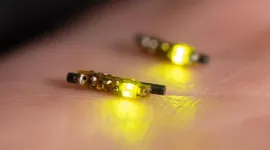The research, presented today at the ESHRE 40th Annual Meeting in Amsterdam, examined the association between various endocrine diseases and the incidence of pregnancy loss. The study investigated 366,539 women in Denmark between 1973 and 2022.
The study found that women with parents diagnosed with endocrine diseases faced a 6% higher risk of pregnancy loss compared to those without a family history of endocrine diseases. Similarly, if a woman’s sister had an endocrine disease, her risk of experiencing pregnancy loss increased by 7%. These patterns persisted even when individual cases of the diseases were considered.
The results highlight having a family history of endocrine disease as an important, yet previously underexplored, factor in assessing the risk of pregnancy loss.
Dr Pia Egerup, from Copenhagen University Hospital Hvidovre and lead author of the study, comments, “This study is the first of its kind to link familial endocrine disease with pregnancy loss, providing evidence that these familial conditions contribute to the risk.
“We believe that the mechanism linking familial endocrine disease and pregnancy loss could be a shared genetic background, predisposing individuals to both endocrine disease and pregnancy loss. One potential mechanism could involve high risk human leukocyte antigens (HLAs), which define the immune system’s ability to distinguish ‘good from bad’. Specific HLA types are known to be associated with several endocrine and autoimmune diseases and could also be associated with pregnancy loss.”
The endocrine system is a complex collection of glands and organs that use hormones to regulate various bodily processes, including metabolism, growth and mood [2]. Dysfunction in one or more parts of the system can lead to hormone imbalances, or improper responses from the body to the hormones produced. Endocrine diseases have different causes dependent on the condition, which include type 1 and 2 diabetes, PCOS and hyperthyroidism or hypothyroidism.
In addition to uncovering the link between familial endocrine disease and pregnancy loss, the research also demonstrated a significant association between pregnancy loss and endocrine disease, showing that the association increases with the number of losses. Women with endocrine disease had a 15% higher risk of experiencing one pregnancy loss (OR 1.15, 95% CI 1.12-1.17) compared to women without an endocrine disease, and a 30% higher risk of experiencing two losses (OR 1.30, 95% CI 1.24-1.37). Additionally, the risk was notably higher, at 81%, for women experiencing three or more losses (OR 1.81, 95% CI 1.70-1.93).
Recurrent pregnancy loss affects between 2-5% of women trying to conceive and almost half of cases remain unexplained [3]. It can have a significant psychological and emotional toll, with symptoms of moderate or severe depression present in approximately 10% of affected couples, along with feelings of anxiety, grief, guilt and anger [4].
Dr Egerup furthers, “Understanding the shared mechanisms between pregnancy loss and endocrine diseases could pave the way for novel preventive and therapeutic approaches to help prevent pregnancy loss. Additionally, we encourage healthcare providers to consider family history when diagnosing and managing women with recurrent pregnancy loss as a result of these findings.”
Professor Dr Carlos Calhaz-Jorge, Immediate Past Chair of ESHRE, comments, “This study provides evidence of an increased risk of pregnancy loss if certain endocrine diseases are present in a woman’s family. This information underscores the importance of taking a detailed family history for all pregnant women to inform potential preventive measures.”
The study abstract will be published today in Human Reproduction, one of the world’s leading reproductive medicine journals.
ENDS
Notes to editors:
A reference to the ESHRE Annual Meeting must be included in all coverage and/or articles associated with this study.
For more information or to arrange an expert interview, please contact the ESHRE Press Office at: press@eshre.eu
About the study author:
Dr Pia Egerup is a MD and a PhD Student from Department of Obstetrics and Gynaecology at Copenhagen University Hospital Hvidovre. She has been involved in research in reproduction since 2011. Her special interest is pregnancy loss and recurrent pregnancy loss, which has been her focus of research since 2014.
About the European Society of Human Reproduction and Embryology
The main aim of ESHRE is to promote interest in infertility care and to aim for a holistic understanding of reproductive biology and medicine.
ESHRE collaborates world-wide and advocates universal improvements in scientific research, encourages and evaluates new developments in the field, and fosters harmonisation in clinical practice. It also provides guidance to enhance effectiveness, safety and quality assurance in clinical and laboratory procedures, psychosocial care, and promotes ethical practice. ESHRE also fosters prevention of infertility and related educational programmes and promotes reproductive rights regardless of the individual’s background. ESHRE’s activities include teaching, training, professional accreditations, mentoring and career planning for junior professionals, as well as developing and maintaining data registries. It also facilitates and disseminates research in human reproduction and embryology to the general public, scientists, clinicians, allied personnel, and patient associations.
Website: https://www.eshre.eu/
About Human Reproduction
Human Reproduction is a monthly journal of ESHRE and is one of the top three journals in the world in the field of reproductive biology, obstetrics and gynaecology. It is published by Oxford Journals, a division of Oxford University Press.
References:
Egerup, P., et al (2024). Familial endocrine disease increases the risk of pregnancy loss and recurrent pregnancy loss– a nationwide register-based study of 366,548 Danish women. Human Reproduction. Available at: https://academic.oup.com/humrep/issue/39/Supplement_1
U.S. Environmental Protection Agency. (n.d.). Overview of the endocrine system. Retrieved from https://www.epa.gov/endocrine-disruption/overview-endocrine-system
El Hachem, H., et al (2017). Recurrent pregnancy loss: Current perspectives. International Journal of Women's Health, 9, 331-345. https://doi.org/10.2147/IJWH.S100817
Cuenca, D. (2023). Pregnancy loss: Consequences for mental health. Frontiers in Global Women's Health, 3, 1032212. https://doi.org/10.3389/fgwh.2022.1032212 END





